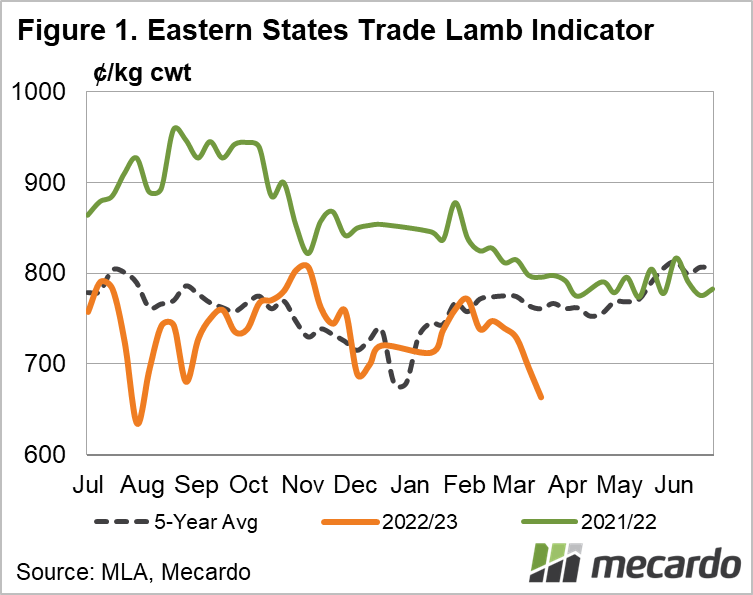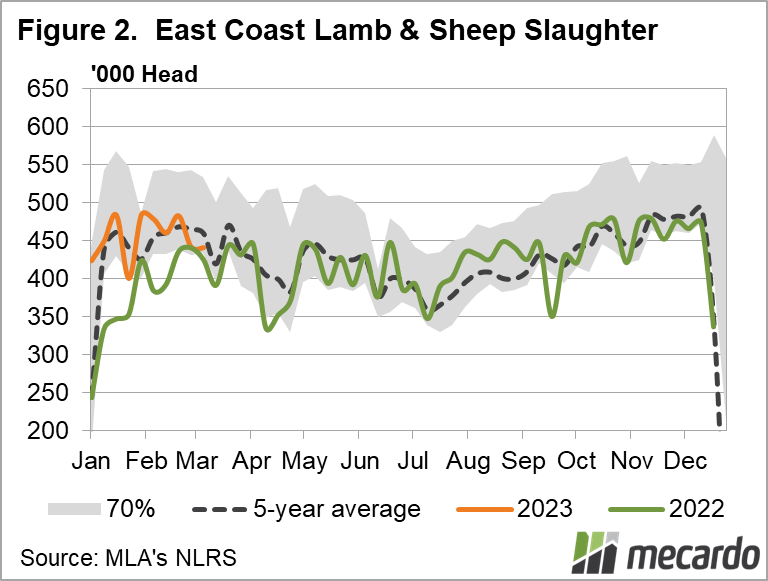According to producers participating in the latest Meat and Livestock Australia (MLA) and Australian Wool Innovation (AWI) sheep survey, nearly 3 million fewer lambs were sold from October through to December 2022 than they expected. Poor lamb performance due to weather conditions, and lower prices, were the biggest factors for the more than 50% of producers surveyed who sold less than planned. This means many of those lambs will be hitting the market in the next few months, at a time when supply has historically dropped down.
The reformatted survey in October had a strong focus on determining the volume of lambs to be turned off through the spring flush and into the first half of 2023. MLA and AWI surveyed the same respondents in February, to gauge how those intentions had panned out and found nearly 30% fewer lambs were sold in the last quarter of 2022, taking it from an expected 11.84 million to just 8.75 million. In turn, 55% of producers now plan to sell more lambs from January to June this year than they reported in October, taking that projected figure from 10.17 million head to 13.44 million.
The survey results are broken down to a state level and show that Victorian producers sold 1 million fewer lambs than predicted from October-December 2022, and NSW producers sold 1.1 million fewer lambs. WA was down about 400,000 lambs. Expected sales in the east for the first half (January-June) of 2023 vary again with Victorian producers projecting an extra 2 million lambs to be sold in that period than they reported in October and NSW about 700,000. Western Australian producers look to offload the same number of lambs that weren’t sold last year.
If we look at the actual volumes we have on hand, we can see East coast lamb slaughter was 3.5% above the five-year average for the first 9 weeks of 2023, and 11% above the same period last year. While slaughter throughput for the last 12 weeks of 2022 was also up (15% on the year prior and 3% on the five-year average), total lamb slaughter for the year was still below the pre-drought levels of 2017/18. MLA has forecast 22.63 million lambs will be processed this year, which is 1 million more than the final estimate for 2022. This is well below the extra 3 million producers plan to sell before June that they didn’t turn off last year.
What does it mean?
Weather impacting lamb weights and lower prices may have encouraged producers to hang onto stock late last year. The latest survey and slaughter figures show that many haven’t been able to hold onto stock for much longer. Slaughter historically trends lower for the coming couple of months, in turn keeping lamb prices steady to rising. If the extra lambs held over to optimise weight and prices continue to come onto the market as the producer survey indicates, the autumn supply/demand equation will look different this year.
Have any questions or comments?
Key Points
- Sheep producers report selling about 3 million fewer lambs than expected in the last quarter of 2022.
- Seasonal conditions and lower prices were cited as causing producers to hold out on turning off lambs.
- Lamb slaughter for the year-to-date is 11% higher than the same period last year and is set to continue if current producer sentiment eventuates.
Click on figure to expand
Click on figure to expand
Data sources: MLA, AWI, Mecardo














